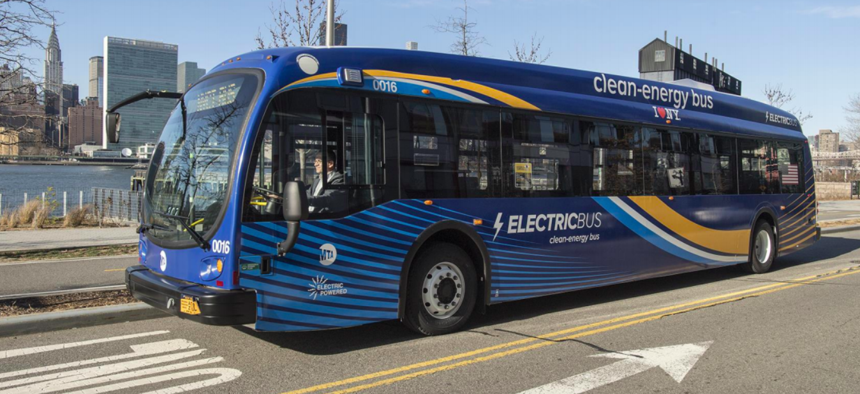North America’s Largest Transit System Is the Acid Test for Electric Buses

Office of New York Gov. Andrew Cuomo

Connecting state and local government leaders
“There really has been a convergence of factors over the last four or five years that has made this a really good time for New York to jump in,” according to Proterra's chief commercial officer.
Compared with other bus system’s in North America, New York City’s is gigantic. It daily serves over two million passengers across all five boroughs with 5,700 buses, 330 routes, and 16,000 stops, and it operates in a uniquely hostile environment of stop-and-go traffic. The average NYC bus travels only 7.4 miles per hour—one of the slowest bus speeds in the U.S.
So if New York City can adopt all-electric buses, any place can. Last week the city began a three-year pilot with 10 buses from bus makers Proterra and New Flyer. If the buses prove themselves in the initial phase, the Metropolitan Transportation Authority plans to purchase 60 more.
The five Proterra buses are running on routes in Brooklyn and Queens and recharge their batteries midday or overnight at a bus depot in Queens. The five New Flyer buses are running on routes in Manhattan and also charge midday or overnight in the same borough. In addition to the bus depot charging stations, the city is testing three “en-route” high power charging stations, which allow the buses to quickly rejuice.
Proterra’s chief commercial officer Matt Horton believes the timing of New York’s pilot isn’t an accident. “There really has been a convergence of factors over the last four or five years that has made this a really good time for New York to jump in,” he says. The costs of batteries, power train elements, and manufacturing have fallen, making electric buses cheaper to operate than diesel over their lifetime. A May 2016 Columbia University study (pdf) commissioned by NYC transit places lifetime savings at $168,000; Proterra says its buses save $448,000.
Electric buses can now survive longer operational hours and outperform diesel buses on energy efficiency and speed of acceleration. “There are now so many customers that have had great experiences with their electric buses,” says Horton.
“Nearly every agency that we talk to has either already bought electric buses or is planning to within the next year or so,” he adds. “We are very, very confident that [the U.S.] market is actually going to go to 100% battery electric in a little more than a decade.”
Karen Ho writes for Quartz, where this article was originally published.

NEXT STORY: New York State Police launch drone program




